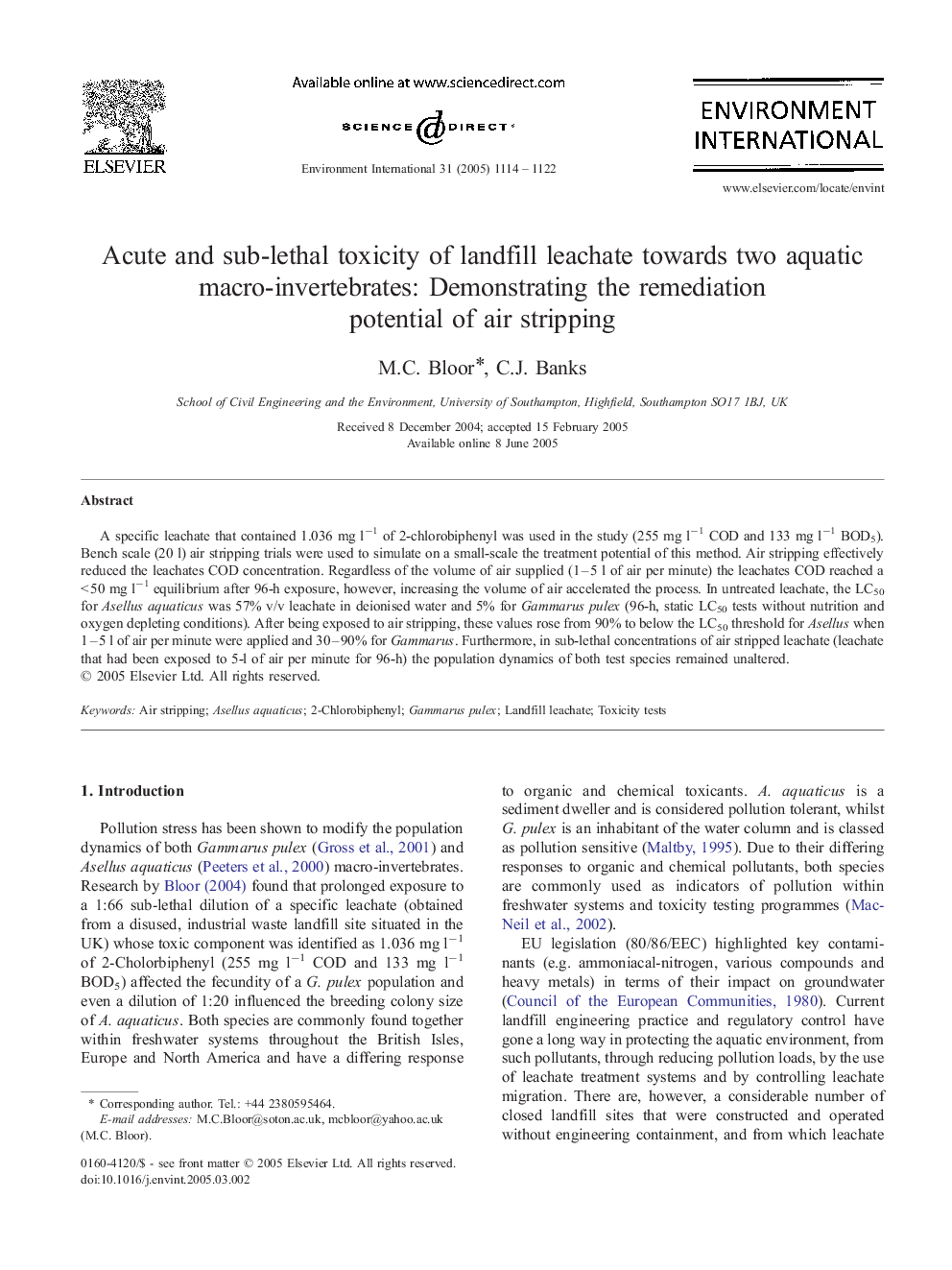| Article ID | Journal | Published Year | Pages | File Type |
|---|---|---|---|---|
| 9455639 | Environment International | 2005 | 9 Pages |
Abstract
A specific leachate that contained 1.036 mg lâ1 of 2-chlorobiphenyl was used in the study (255 mg lâ1 COD and 133 mg lâ1 BOD5). Bench scale (20 l) air stripping trials were used to simulate on a small-scale the treatment potential of this method. Air stripping effectively reduced the leachates COD concentration. Regardless of the volume of air supplied (1-5 l of air per minute) the leachates COD reached a <Â 50 mg lâ1 equilibrium after 96-h exposure, however, increasing the volume of air accelerated the process. In untreated leachate, the LC50 for Asellus aquaticus was 57% v/v leachate in deionised water and 5% for Gammarus pulex (96-h, static LC50 tests without nutrition and oxygen depleting conditions). After being exposed to air stripping, these values rose from 90% to below the LC50 threshold for Asellus when 1-5 l of air per minute were applied and 30-90% for Gammarus. Furthermore, in sub-lethal concentrations of air stripped leachate (leachate that had been exposed to 5-l of air per minute for 96-h) the population dynamics of both test species remained unaltered.
Keywords
Related Topics
Life Sciences
Environmental Science
Environmental Chemistry
Authors
M.C. Bloor, C.J. Banks,
